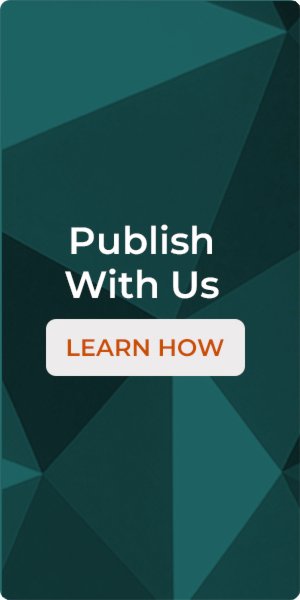This guide will assist you in preparing the final manuscript for delivery to the Press. Please note that these guidelines are only required of authors who are submitting a final, contracted manuscript. If you have any questions after reviewing this guide, please contact your editor.
To ensure an efficient publication process, manuscripts must be prepared according to the instructions given below. Preparing your manuscript according to these guidelines speeds up the publishing process and enables us to provide you with a cleaner, more accurate proof. If your manuscript does not meet these criteria, we will return it to you for correction.
Submitting the Final Manuscript
Create your manuscript files in Microsoft Word for PC or Mac. Please give your manuscript files a final read-through before submitting them. Your manuscript is considered final at the point of submission and no substantive changes can be made after this point.
Please note that only minor changes (such as typographical corrections) can be made when you are reviewing the copyedited manuscript or page proofs. Once the book has been typeset and is in the proof stage, changes to the text delay the production of the book, and can even delay the publication date. Thank you for understanding.
- Once you have made your final changes (including accepting all remaining tracked changes and resolving queries) and consider the manuscript ready for delivery, please submit your files electronically to your editor. Submit the files as email attachments or through Dropbox or Google Drive if the files are too large. GUP can provide you with a Dropbox folder to upload your files; please contact your editor for this.
- Submit all permissions, in writing, that may be required to reproduce illustrations or previously published material. See the Art Guidelines for more information on permissions.
- Any material (such as artwork) that cannot be included in electronic form must be noted and described. Conversely, any material that cannot be printed or supplied as a PDF (such as videos or animations) must also be noted and described. For all such material, the software used, the number of items, their type(s), and the individual file names must be specified.
- Save all art and illustrations (e.g., tables, maps, photographs) in separate files. Do not embed them in the Word files. (Instructions for preparing all art materials can be found in the Art Guidelines.)
- For guidance on callouts and captions, please refer to the Art Guidelines.
Save each chapter or other element of the manuscript (e.g., preface, bibliography, figures) in clearly-named, separate electronic files according to the following guidelines:
Chapters
Use the chapter number and last name of the first author (e.g., 01Lee.docx) as the file name. For edited volumes, name each file using the chapter number and the last name of the first author for that specific chapter.Other Text Matter
Provide any of these elements that are to be included in the work: introduction, part titles, conclusion, epilogue, and afterword. Label files by part of the manuscript (e.g., Epilogue.docx).Front Matter
Provide any of these elements that are to be included in the work: title page, dedication, epigraph, table of contents, list of illustrations, list of tables, preface, and acknowledgments. Label files by part of the manuscript (e.g., Preface.docx).Back Matter
Provide any of these elements that are to be included in the work: Notes, appendixes, glossary, bibliography or reference list, and author/contributor bios. Label files by part of the manuscript (e.g., Bibliography.docx).
Formatting
- Set the page size to 8.5 x 11 inches. Type all elements of the manuscript double-spaced with one-inch margins on all sides using 12 point Times New Roman font.
- Use the same font for all elements of your manuscript. Do not vary font or style to indicate levels of heads, extracts, epigraphs, or other special text. If you need to insert special characters, use Word’s extended symbol set found under InsertàSymbol. If your manuscript contains text in non-Roman alphabets, you need to use a True Type (Unicode) font.
- Do not use special formatting or codes in the preparation of your manuscript.
- Type the manuscript flush left/ragged right; in other words, do not use the right justification setting on the computer.
- Insert a single tab indent to indicate the beginning of a new paragraph. Do not insert blank lines between paragraphs.
- Indent extracts or block quotations 0.5 inches in from the left. Separate the extract from the surrounding text with a hard return before and after the extract. Do not indent from the right. These should also be double-spaced.
If your manuscript contains multiple levels of subheading, identify these consistently utilizing different types of formatting, such as numbers in angle brackets to indicate different head levels:
<1>Experimental Studies (level 1 head)
<2>Laterality Studies (level 2 head)
<3>Response Latency (level 3 head)Note: Chapter titles and author names do not count as headings.
- Use the automated endnote feature of your word processing program. Endnotes should appear at the end of chapter files, not at the end of the entire manuscript. Begin the endnote and footnote numbers in each chapter with 1 and number consecutively throughout each chapter. Notes for figures, tables, graphs, charts, or text boxes should have a separate numbering scheme from the text notes.
Style
- In general, our house citation style follows the Chicago Manual of Style, 17th edition (CMOS) and Merriam-Webster Unabridged (online). We will accept other styles, such as APA or MLA, so long as the format is consistent across all entries and chapters.
- GUP follows the conventions of American English for spelling and punctuation. All usages of Standard British English will be changed to American English.
- Please let us know your decisions regarding style by listing them on a style sheet. “Style” here refers to conventions of spelling, hyphenation, capitalization, and the like. Special punctuation, unusual diacritics, and other items should also be noted on the style sheet. Your style sheet will help us, the copyeditor, and the proofreader resolve inconsistencies in the manuscript.
- If your book includes non-English words or transliterated text, or if there are special considerations regarding orthography, capitalization, etc., make decisions early about how to handle such issues in the text. Write out the rules you plan to follow as part of your style sheet and apply them consistently.
- In addition, please keep a list of diacritical marks or special characters that cannot be keyboarded through your word processing program. Please note in the manuscript where they occur.
- Use italics to indicate where italics are needed, though use them sparingly. Do not use boldface anywhere in the text of your manuscript, unless it is to differentiate headings or subheadings.
- Italicize the first occurrence of a frequently used foreign term.
- Use the serial comma: The author discusses topic a, topic b, and topic c.
- Type sign glosses in small capital letters. Use full capital letters for abbreviations, acronyms, and handshape designations.
- Do not use deaf or hard of hearing as nouns (i.e., “the deaf”). Avoid using hearing impaired.
- Coda: a child of Deaf adults; many Codas are bilingual and move comfortably in the deaf community. The national Coda organization is written in full caps: CODA.
- Deaf/deaf: GUP house style generally prefers using lowercase “d,” but we will also respect an author’s wishes to adhere to a specific convention, provided that the convention does not cause the prose to be difficult to follow, and most importantly, that it is used consistently throughout the manuscript.
- disability: not handicapped
- gloss: the English representation of the meaning of a sign; glosses are set in small caps
- handshape: the configuration of the hand when producing a sign; most handshapes are letters of the American Manual Alphabet and the manual numbers
- hard of hearing: we do not hyphenate hard of hearing even when used as an adjective
- hearing: used to describe people who are not deaf or hard of hearing; do not use hearing as a noun (i.e., “the hearing”)
- lipreading: one word, not hyphenated
- more than: not over
- nonmanual signals: a grammatical component of sign languages produced by facial expressions and body movement; nonmanual signals contribute to the meaning of a sign
- sign language: we also accept signed language, provided the convention is used consistently

